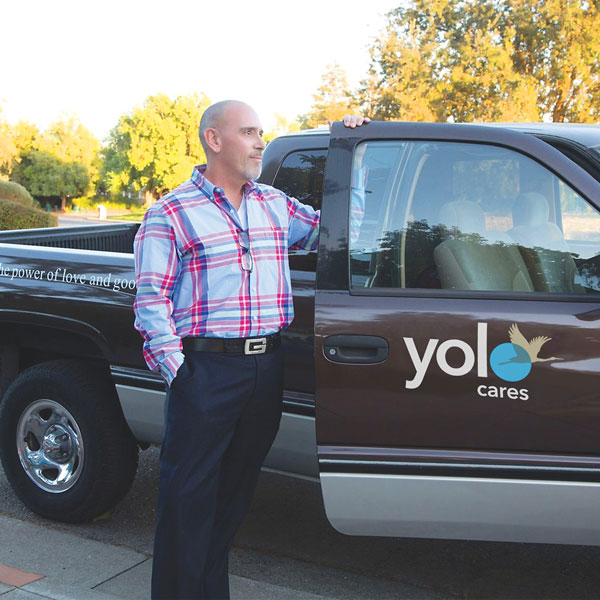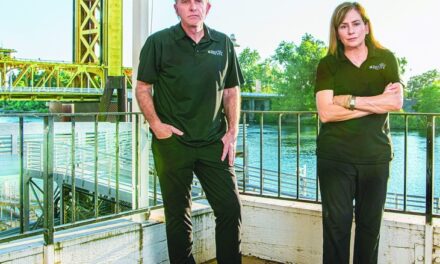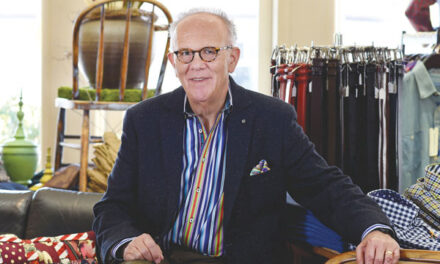Early last year, I needed hospice care for the end of my husband’s long life. I asked Jim’s doctor for YoloCares hospice. He said it was a good choice. He heard good reviews about YoloCares, especially in grief support services.
My decision was personal. It was a tribute to how Jim and I built our business for 27 years. Yolo was our largest advertiser. I learned about their services from ads. Jim always wanted to support businesses that supported us.

Jim’s hospice care was less than five days. He was 93 and suffered four years of worsening dementia after a car accident that caused a brain injury. His wishes were clear. He was ready to go.
Still, I underestimated what hospice care offers. And I was grateful that YoloCares is a leader in wrap-around grief support. My year of grieving brought much insight.
I recently sat down with YoloCares CEO Craig Dresang to learn more.
“Both my mom and my first partner were both diagnosed with terminal cancer the same year. She was in her 50s and I was 28. She was first diagnosed when I was 8. My partner was 34,” Dresang says. “My career in Chicago at the time had nothing to do with health care or hospice, so it was a total shock to me.”
Dresang endured completely different experiences when his mom and partner died.
“My mother wanted no extreme intervention and yet it was forced on her,” he says. “All they did was in fact counter to her wishes. She died in a hospital room pumped up with devices and not one bit of peace.”
In contrast, Dresang’s partner Danny died according to his own plans.
“He died comfortably and peacefully at home and holding my hand. And it was really a beautiful and meaningful way for him to transition out of this world,” Dresang says. “And I remember that year thinking someday I want to do something for this program called hospice.
“Many years later, when the president of the university I was working for was retiring, I took a call from a headhunter. The position he offered me was in hospice.”
Dresang took the job and built a new career around his deeply personal experiences.
Hospice and palliative care are similar. Hospice begins when a person’s diagnosis leaves them six months or less to live. If patients live longer, palliative care keeps them as comfortable as possible, without medical intervention to extend life.
Many hospital chains have financial motives not always aligned with the best interests of the dying patient. Dresang explains, “My mom died in a hospital, and my partner died in independent hospice. That’s why their experiences were so different.”
Doctors need to better understand end-of-life decisions and offer patients options, from aggressive care to comfortably closing their lives.
“Not enough doctors clearly and compassionately convey the negative side of continuing life-saving treatments,” Dresang says. “Only when tradeoffs are openly discussed will quality of life at the end truly improve.”
Jim made his end-of-life decisions when first diagnosed with dementia. I found a dementia advanced care directive that let Jim decline life-saving treatments. He believed it was in everyone’s best interest to let his body go peacefully when his mind could no longer function.
Jim’s brief hospice was a beautiful experience for our family. It gave Jim time to say goodbye and let us return the love and gratitude for what he brought to our lives.
Jim’s coffee group came by one morning. I’ll never forget the laughter coming from the bedroom as they shared memories, inspiration and gratitude for a life well lived.
YoloCares professionally prepared us, then took the hands-off approach we requested. They were a phone call away when we had questions.
When the time came, Jim departed this world with a huge smile. And with his family and beloved dog by his side.
After Jim died, YoloCare’s grief program came into my life. There were phone calls, cards and emails with gentle invitations for counseling, grief support groups and more. I felt they cared as much about those who survive as the patient who passes.
“As much as we love regulation in the state, they never regulated hospice,” Dresang says. “We have 1,200 hospices in California, more than the rest of the country combined.”
“While I run a business that needs to generate revenue, I also believe that there are certain sectors of our life that should be hands off in terms of greed,” he says. “And providing hospice is one of them, and that’s why I’m so passionate about what we do.”
Our community should be grateful to have an innovative, well-run hospice such as YoloCares.
I hope sharing my experience will inspire friends and neighbors to consider end-of-life decisions early. Six months ago, I was blessed to find a new partner to love. Steve and I have already made our end-of-life decisions clear to each other.
Please help loved ones do the same. Only through open and honest dialogue will we receive the end-of-life care everyone deserves.
Cecily Hastings can be reached at publisher@insidepublications.com. Follow us on Facebook and on Instagram: @insidesacramento.














